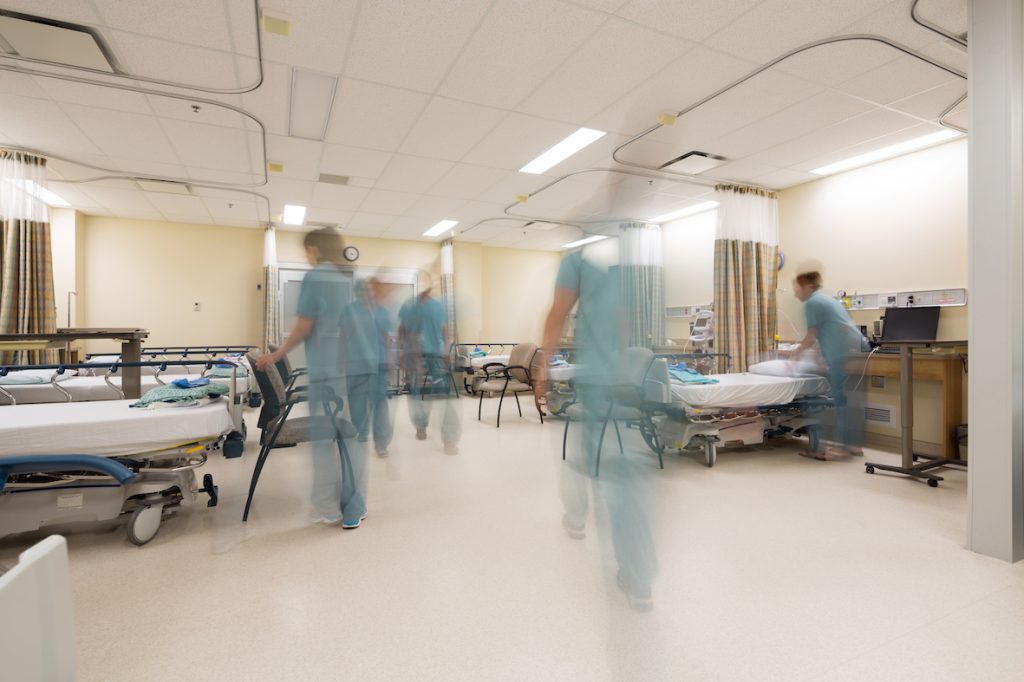Why healthcare facilities must take Legionella prevention seriously (or risk devastating consequences)
In most buildings, Legionella control is important. In hospitals and healthcare settings, it’s absolutely critical.
The stark reality is this: when Legionella infiltrates a healthcare facility’s water system, it doesn’t just create a compliance headache – it creates a perfect storm where the most vulnerable people encounter the greatest risk. It’s a scenario where “clean” water becomes a potential vector for serious illness or death.
At HCS Water Treatment, part of Premier Technical Services Group Ltd (PTSG), we’ve worked with major healthcare providers including Perth Royal Infirmary and Glasgow Royal Infirmary. We’ve seen firsthand the unique challenges hospitals face in maintaining water safety and the devastating consequences when things go wrong.
A Perfect Storm: Why Hospitals Face Heightened Risk
Healthcare facilities create what water safety experts recognise as the “perfect storm” for Legionella risk, combining all the key factors that make an outbreak more likely:
1. Highly Vulnerable Populations
Hospitals are filled with precisely the people most susceptible to Legionnaires’ disease:
- Elderly patients
- Immunocompromised individuals
- People with underlying respiratory conditions
- Surgical patients
- Those with chronic illnesses
For these vulnerable patients, Legionnaires’ disease isn’t just a serious illness it can be life-threatening, with mortality rates in healthcare-acquired cases reaching 30-40%, far higher than the general population.
2. Complex Water Systems
Modern hospitals feature some of the most extensive and intricate water networks imaginable:
- Miles of pipework spanning multiple departments
- Numerous outlets, many infrequently used
- Complex specialist equipment connected to water systems
- Varied temperature requirements across different areas
- Multiple water uses from drinking to clinical procedures
These sprawling systems create countless opportunities for Legionella to establish colonies in dead legs, infrequently used outlets, or areas where temperature control is challenging.
3. Inevitable Stagnation Points
Even in the busiest hospitals, certain water outlets inevitably see infrequent use:
- Isolation rooms between patients
- Seasonally fluctuating wards
- Emergency backup facilities
- Specialist treatment areas used intermittently
- Rooms taken out of service for maintenance
Each of these creates opportunities for water to stagnate the perfect condition for Legionella proliferation.
4. Temperature Control Challenges
Hospitals face a fundamental dilemma with water temperatures:
- Hot water must be hot enough to control bacteria (above 50°C at outlets)
- Yet must not pose a scalding risk to vulnerable patients
This balancing act requires sophisticated engineering solutions including properly maintained Thermostatic Mixing Valves (TMVs) themselves a potential risk point if not regularly serviced.
5. Aerosol-Generating Activities
Healthcare settings are full of activities that generate water aerosols—the primary transmission route for Legionella:
- Showers for patient hygiene
- Respiratory therapy equipment
- Certain dental procedures
- Decorative fountains in reception areas
- Humidifiers and nebulisers
These create multiple potential exposure routes for already vulnerable patients.
The Real-World Impact: Hospital Legionella Outbreaks
The consequences of inadequate water management in healthcare settings aren’t theoretical they’re tragically real. Consider these sobering examples:
The Stafford Hospital Case
In 2012, a patient at Stafford Hospital died from Legionnaires’ disease acquired during their stay. The subsequent investigation revealed systematic failures in water management:
- Temperature monitoring records were falsified
- Routine maintenance was repeatedly skipped
- Staff lacked proper training
The NHS Trust was fined £100,000, but the human cost was immeasurable.
The Hospital Water System Renovation Disaster
During a major hospital renovation project, temporary changes to the water system created dead legs and disrupted the chlorination system. The result? Eight vulnerable patients contracted Legionnaires’ disease, with two fatalities. The investigation found:
- Inadequate risk assessment before works began
- Poor communication between contractors and infection control teams
- No water safety plan for the transition period
The Transplant Unit Tragedy
A specialised transplant unit treating patients with severely compromised immune systems experienced a Legionella outbreak traced to shower heads that hadn’t been included in the disinfection programme. Four immunocompromised patients contracted the disease, with two fatalities.
These cases share common elements: vulnerable populations, system complexities and gaps in water safety management with devastating consequences.
The Regulatory Framework: HTM 04-01 and Beyond
Healthcare facilities face more stringent water safety requirements than standard buildings. In addition to ACoP L8 and HSG274, UK hospitals must comply with:
Health Technical Memorandum 04-01 (HTM 04-01)
This comprehensive guidance specifically addresses water safety in healthcare settings, covering:
- Design considerations for healthcare water systems
- Operational management requirements
- Specific risk assessment approaches
- Temperature regimes and monitoring
- Specialist considerations for augmented care units
Water Safety Groups (WSGs)
Healthcare providers must establish multidisciplinary groups including:
- Estates/facilities management
- Infection prevention and control
- Clinical representatives
- Authorising engineers (water)
- Specialist contractors
This cross-functional approach recognises that water safety in healthcare is too important and complex to remain solely within facilities management.
The Critical Control Measures: Beyond the Basics
Effective Legionella control in healthcare requires going beyond standard approaches:
1. Enhanced Monitoring Regimes
Healthcare facilities require more frequent and comprehensive monitoring than standard buildings:
- More sentinel outlets
- Higher testing frequency
- Additional parameters beyond temperature
- Trend analysis to identify developing issues before they become critical
2. Point-of-Use Filtration for High-Risk Areas
In areas serving the most vulnerable patients, additional protection is often necessary:
- Point-of-use filters providing absolute barriers to bacteria
- Regular replacement protocols
- Verification testing
- Clear documentation of filter locations and maintenance
3. Strategic TMV Management
The proper management of Thermostatic Mixing Valves is critical:
- Regular servicing and maintenance
- Performance verification
- Risk-based replacement programmes
- Documentation of all TMV locations and service history
4. Robust Flushing Programmes
Systematic approaches to prevent stagnation:
- Electronic monitoring of flushing compliance
- Clear responsibility assignment
- Specific protocols for areas taken out of service
- Automatic flushers in critical areas
5. Water Quality Monitoring Beyond Legionella
Comprehensive water quality management including:
- Pseudomonas aeruginosa monitoring in augmented care
- General bacteriological testing
- Chemical parameter monitoring
- Endotoxin testing where appropriate
The HCS Water Treatment Healthcare Approach
At HCS Water Treatment, we understand the unique challenges healthcare facilities face. Our expertise in healthcare water safety is demonstrated through our work with facilities like Perth Royal Infirmary and Glasgow Royal Infirmary, where we’ve implemented comprehensive water safety programmes.
Our healthcare-specific approach combines:
1. Tailored Risk Assessment
We conduct detailed risk assessments specifically designed for healthcare environments, identifying:
- Patient vulnerability levels by department
- System complexity and interconnections
- Historical problem areas
- Operational challenges specific to clinical settings
2. Minimally Disruptive Implementation
We understand that hospitals can’t simply shut down for water safety work:
- Phased implementation approaches
- Out-of-hours servicing where possible
- Close coordination with clinical teams
- Minimal disruption to patient care
As we demonstrated at Glasgow Royal Infirmary, our engineers are allotted work for each day on hand-held devices, which allows for evidence of service to be collected, rescheduling requests, and final service reports to be compliance-checked prior to transmission to NHS stakeholders with minimal disruption to ward or clinic protocols.
3. Healthcare-Specific Technology
Our technology solutions are adapted to healthcare requirements:
- ZetaSafe Dashboard for real-time compliance monitoring
- Remote temperature monitoring where appropriate
- Digital documentation accessible to Water Safety Groups
- Integration with healthcare facilities management systems
4. Staff Training for Clinical Environments
We provide specialised training for healthcare staff:
- Role-specific water safety training
- Clinical considerations in water management
- Outbreak response procedures
- Practical guidance for nursing and clinical staff
5. Ongoing Partnership Approach
We don’t just implement and leave we become partners in your water safety journey:
- Regular attendance at Water Safety Group meetings
- Proactive system reviews
- Guidance on regulatory changes
- Support during inspections and audits
The Cost of Inaction: Why Healthcare Can’t Afford to Get This Wrong
The consequences of inadequate water safety in healthcare settings extend far beyond regulatory fines:
Human Cost
- Patient illness and potential fatalities
- Extended hospital stays
- Long-term health impacts for survivors
- Staff exposure to preventable risk
Operational Impact
- Ward closures during outbreak investigation and remediation
- Disruption to critical services
- Redeployment of stretched clinical resources to manage outbreaks
- Potential need for patient transfers to other facilities
Financial Implications
- Regulatory fines and penalties
- Litigation costs from affected patients
- Emergency remediation expenses (far exceeding preventative costs)
- Increased insurance premiums
- Lost revenue from closed facilities
Reputational Damage
- Public loss of confidence in the facility
- Media scrutiny and negative coverage
- Impact on staff morale and recruitment
- Potential long-term stigma associated with the institution
A Sobering Thought: The Vulnerability Reality
Consider this sobering reality: the patients most at risk from Legionnaires’ disease – the elderly, immunocompromised and those with respiratory conditions – are precisely the people most likely to be in your healthcare facility. This isn’t just an issue of compliance; it’s a fundamental duty of care.
When a patient enters your facility, they trust that the water from your taps, showers and clinical equipment won’t make their condition worse. Meeting that expectation isn’t optional, it’s essential.
Moving Forward: Creating True Healthcare Water Safety
Effective healthcare water safety isn’t just about avoiding problems it’s about creating systems where safe water is guaranteed for all patients, regardless of their vulnerability or the complexity of your facility.
This requires:
- Recognition that healthcare water systems need specialist approaches
- Investment in appropriate control measures and technologies
- Collaboration between facilities, infection control, and clinical teams
- Continuity of approach despite changing personnel and priorities
- Verification through appropriate testing and monitoring
Remember: in healthcare settings, water safety isn’t just an operational concern – it’s a patient safety imperative.
Is your healthcare facility’s water safety programme truly robust enough to protect your most vulnerable patients? Contact HCS Water Treatment today on 0141 212 7247 or email us at hello@hcsuk.org to discuss how our specialist healthcare water safety services can help you deliver water that’s genuinely safe for all – no matter how vulnerable they might be.


